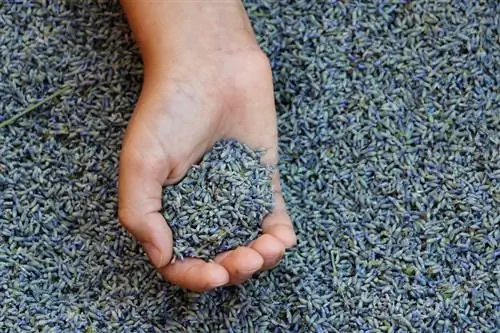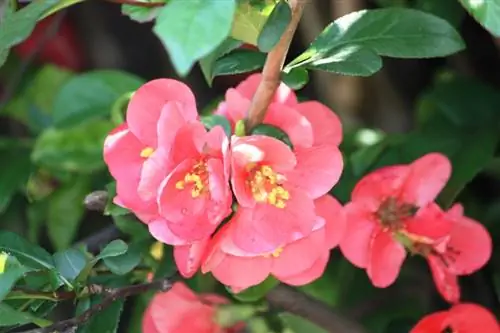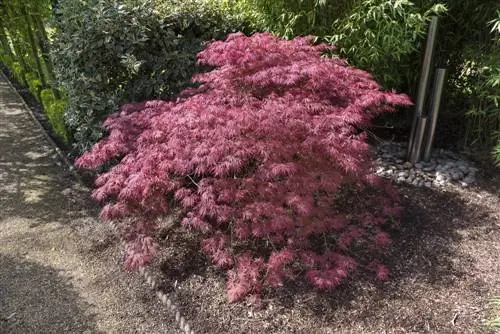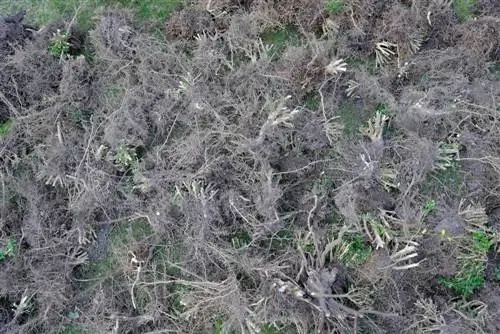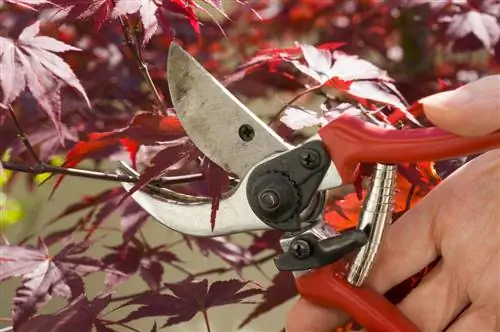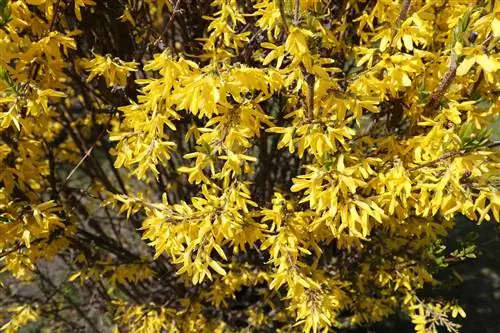- Author admin [email protected].
- Public 2023-12-16 16:46.
- Last modified 2025-06-01 06:02.
Lavender is usually propagated via cuttings or planters, as this form has a higher chance of success than seed propagation. On the other hand, lavender plants in the garden center are quite expensive - especially if you need larger quantities - and growing self-sown plants is also just fun.
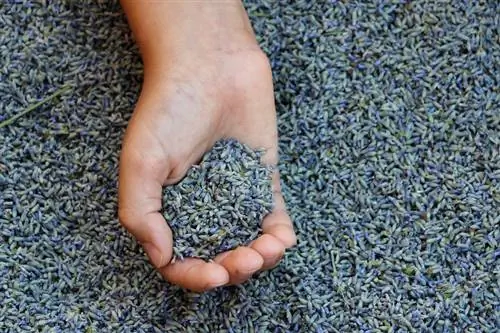
How can you sow lavender successfully?
Lavender can be grown on the windowsill or in the greenhouse from February/March. The seeds should be scattered in germ-free, nutrient-poor potting soil, pressed lightly and placed in a bright location. They germinate after one to two weeks and are plucked out after the first leaves appear.
Seeds mostly from real lavender
In the garden, real lavender in particular sows itself, provided the conditions are right. You can often find young plants in cracks between stones - this is where lavender, which is used to stony ground, feels most comfortable. However, this self-seeding does not occur in all types of lavender. When you buy lavender seeds, you usually only get so-called “wild lavender”, which does not mean pure lavender. However, the resulting plants look very different, not only in terms of their height and shape, but also in terms of leaf shape and color. Sometimes even the colors of the flowers differ.
Prepare seeds before sowing
If you want to use seeds from home-grown lavender plants, they must be properly mature. This means that you should not cut off the spent flower stalks in summer, but rather in spring. To increase the germination rate, you can stratify the seeds before sowing, i.e. store them in the refrigerator for one to two weeks. To do this, place the seeds on a little moist sand, which you fill in a sealable freezer bag (or other sealable container). No further preparation is necessary.
Sowing lavender
You should only sow lavender directly outdoors when frost periods are no longer expected. This is usually not the case until the end of May / beginning of June. Lavender can also be grown on the windowsill or in the greenhouse from February / March, then the plants grown from it will bloom in the same year and can also be harvested.
Sowing instructions
- Fill potting soil (preferably germ-free) (€6.00 on Amazon) into pots or a room greenhouse.
- Low-nutrient herb soil is best.
- You can disinfect these in the microwave beforehand.
- Wet the soil with a spray bottle.
- The seeds are scattered loosely onto the substrate and pressed lightly with the help of a board.
- Spread the stratified seeds along with the sand on the growing soil - as thinly as possible.
- Lavender is a light germinator and needs a bright location.
- The plants germinate after one to two weeks, but may take longer.
- Pick out the plants as soon as the first leaves have appeared after the cotyledons.
Tips & Tricks
You should only plant young lavender plants outdoors or place them in a pot on the balcony when cold temperatures are no longer expected outside - so no earlier than the end of May, even better later. Older lavender is no longer as sensitive.

